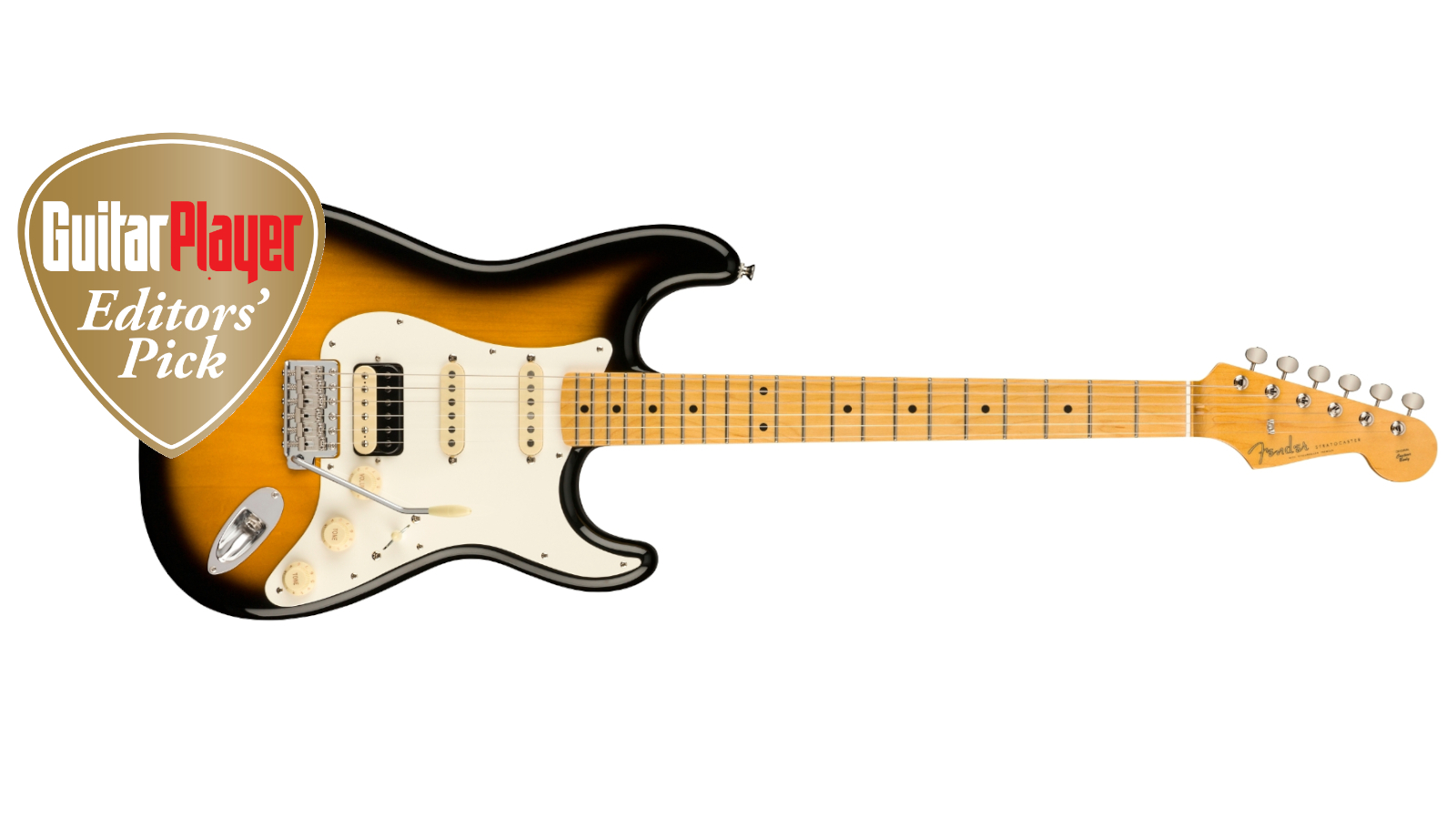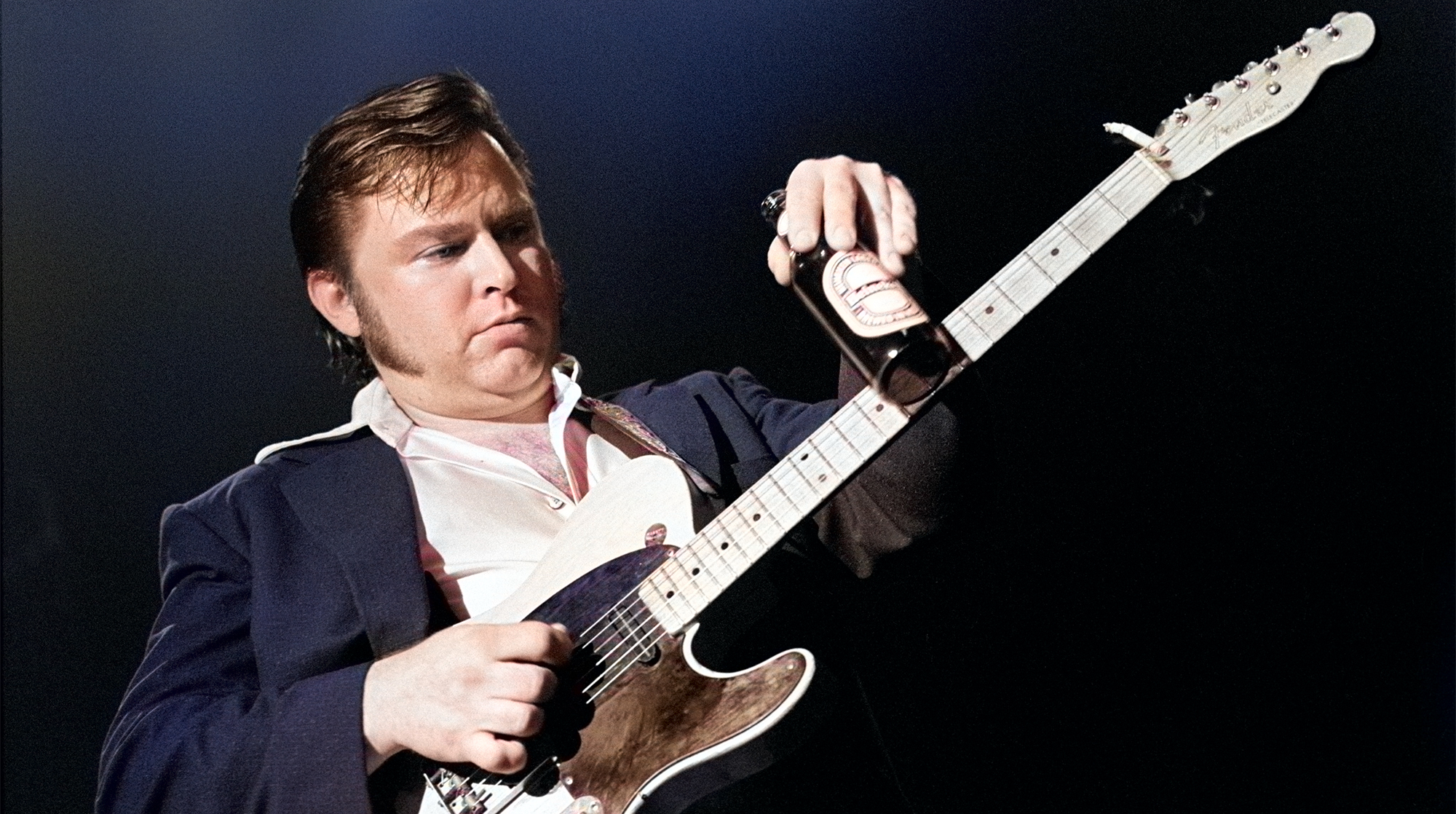GuitarPlayer Verdict
This guitar plays great and sounds great through a range of traditional and alternative Strat tones
Pros
- +
A well-built, great-playing rendition of a popular modified Stratocaster
- +
Impressive alternative and traditional tones
Cons
- -
Bridge humbucker can be a tad dark for clean tones (although, that’s what the coil split is for)
You can trust Guitar Player.
It’s no secret that Japan has produced some outstanding guitars since the late 1970s.
The country’s electrics of that era in particular nudged several U.S. manufacturers to up their game and helped bail Fender out of a tight spot following the company’s near demise some 40 years ago.
It’s with this backstory in mind that the JV Modified ’50s Stratocaster HSS pays homage to the great Japanese Fenders of the early ’80s, all while embodying so much of just how extremely versatile, though relatively affordable, a Strat can be.
The “JV” tag is an acronym for “Japanese Vintage,” but players familiar with Fender’s transitional years from CBS to FMIC will also recognize it as the prefix to the serial numbers on a range of Stratocasters manufactured at the FujiGen Gakki factory.
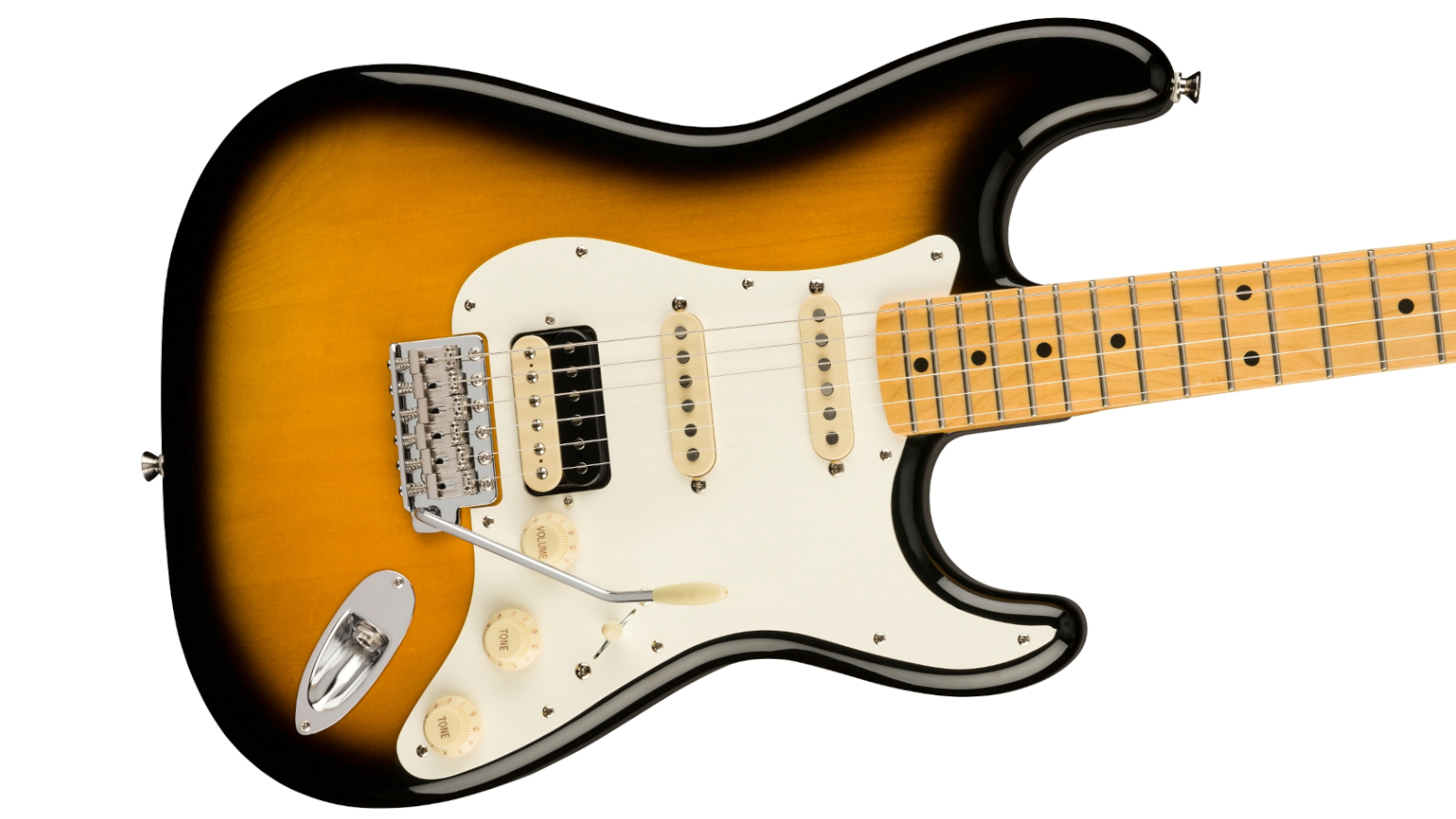
In a bid to regain some of the company’s pre-CBS credibility following a slump in quality in Fullerton through the late ’70s, Fender farmed out the JV Series to Japan.
The quality and accuracy of the guitars that arrived at Fender’s U.S. HQ in April ’82 impressed the American team enormously, and pointed the way forward for the American Vintage Series to come.
Early runs carried the full Fender logo for release in Japan only, then were labeled “Squier by Fender” for release in the U.K., Europe and finally the United States.
All the latest guitar news, interviews, lessons, reviews, deals and more, direct to your inbox!
Appropriately, the new JV Modified ’50s Stratocaster HSS is manufactured in Japan, the first time a standard-issue model for the U.S. market has had such origins since about the late ’90s.
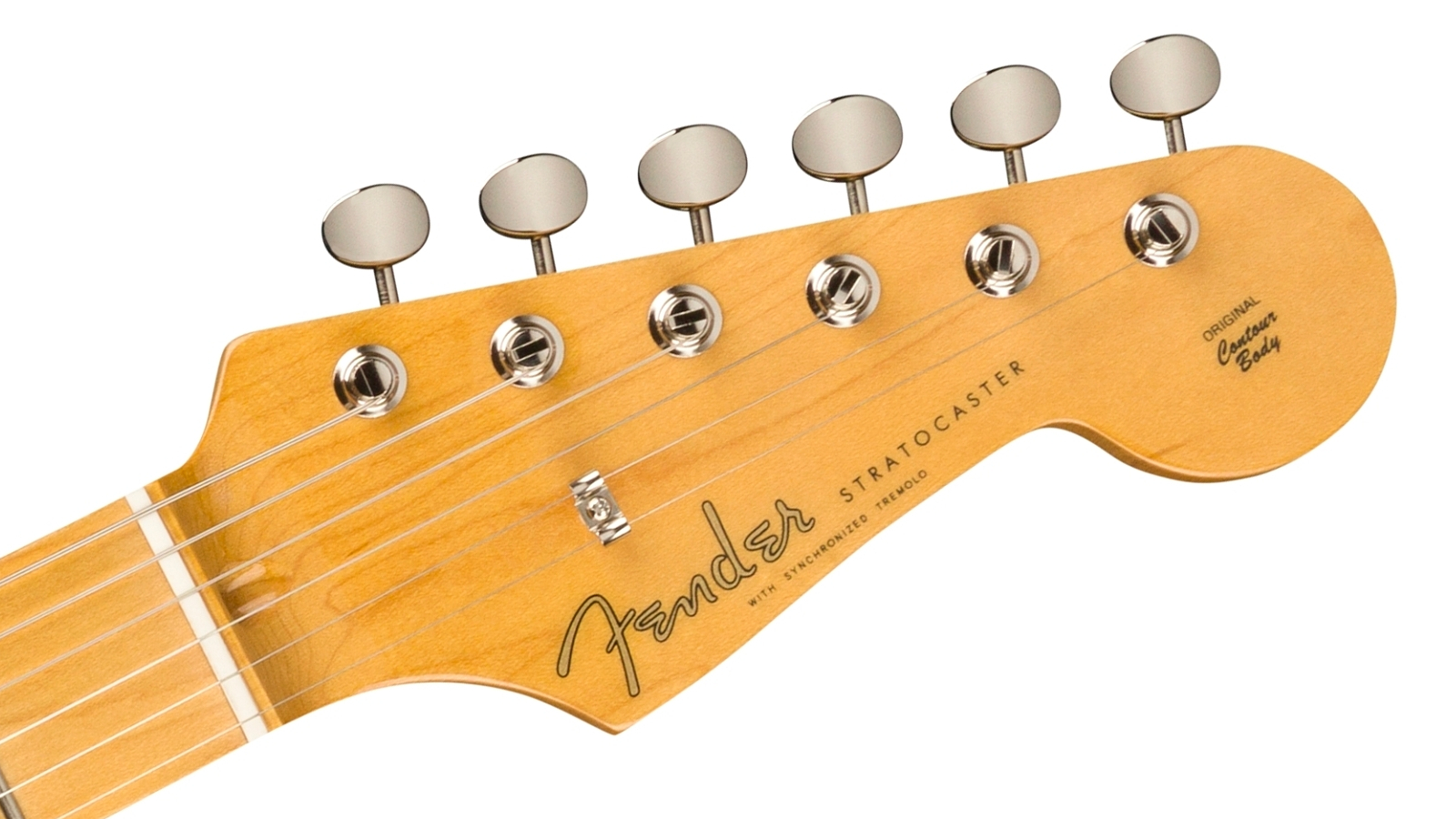
It’s not a dead-on reissue of the circa-’82 JV Series guitars – if anything, the headstock and body shapes are more vintage correct here – but it incorporates elements of that with the company’s successful Vintage Modified ethos, adding several contemporary updates in specifications to a design that still pays obvious tribute to the pre-CBS originals.
Notable modern features include locking tuners that otherwise mirror vintage Klusons (in all but the name), a 9 ½–inch radius fingerboard with medium-jumbo frets, a 1.65-inch width across the bone nut and truss-rod adjustment access at the headstock end.
Notable modern features include locking tuners that otherwise mirror vintage Klusons
There’s also the pickup configuration that contributes to the model’s name.
Yet for all that, the “vintage” side of the equation remains plain to see and dominates the overall first impression of the guitar, fat bridge pickup aside.
The body is the traditional ’50s Stratocaster shape, with deep ribcage and forearm contours and a polyurethane two-tone sunburst finish.
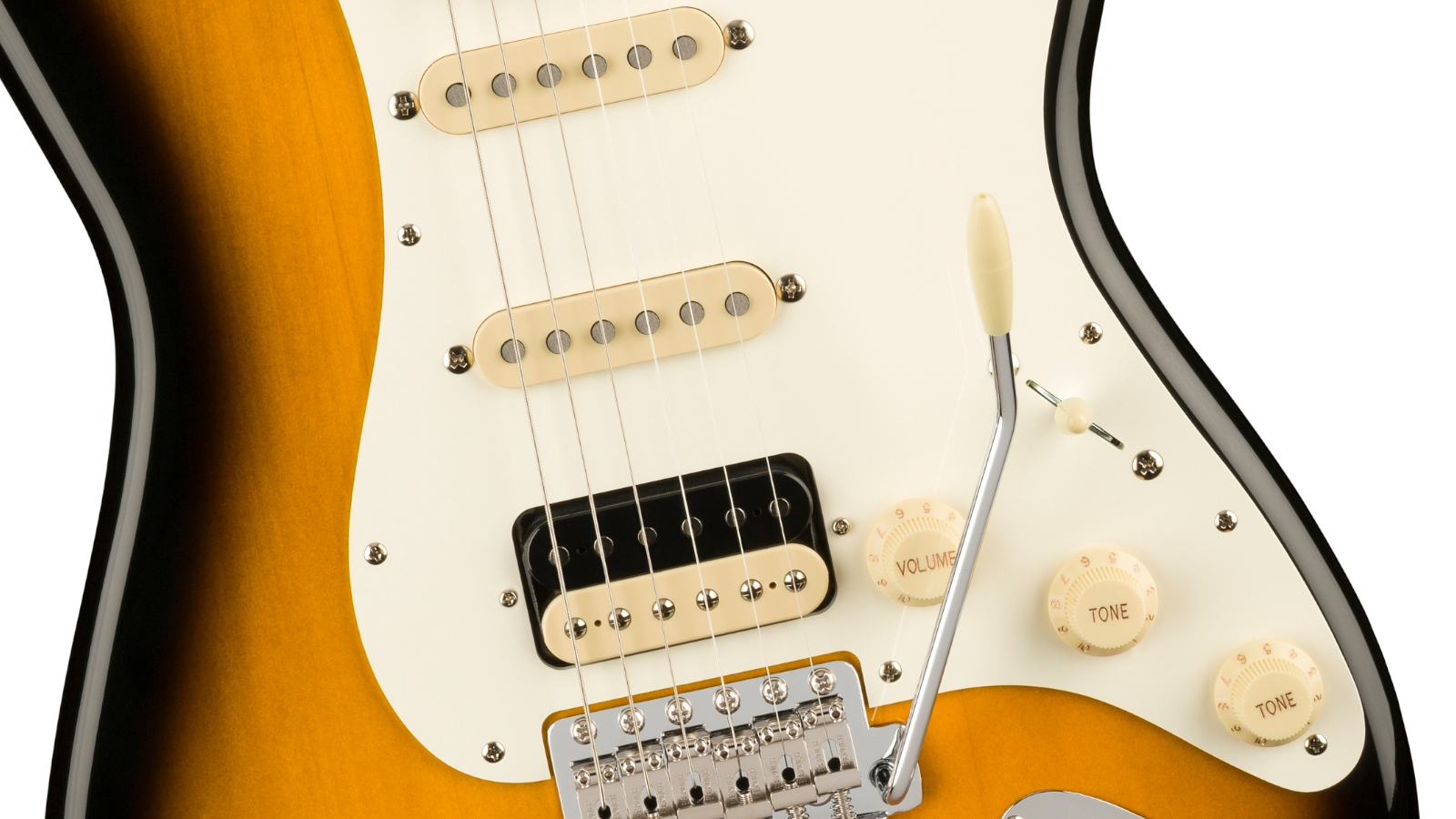
It’s made of basswood, however, rather than the swamp ash of most early Strats or the alder that Fender transitioned to around the 1957 touchstone era that best defines this guitar, a diversion taken, I suspect, largely to enable the appealing seven-pound weight of this example at a time when supplies of light ash and alder are difficult to find.
The neck is solid maple with a soft-V back shape and a fairly chunky depth, finished in clear polyurethane satin with a gloss headstock face and a spaghetti Fender logo.
It’s more rounded than some of the sharper, boat-like profiles of many ’57 reissues, and it feels great in the hand as a result.
The neck is solid maple with a soft-V back shape and a fairly chunky depth
I personally would have enjoyed a little more rolling of the edges of the fingerboard, which is not to say there’s a sharp feel to the neck-to-fingerboard transition in the hand at all.
With modernized tuners at the other end, the vibrato bridge is Fender’s fully vintagestyle six-point tremolo, with a steel base and six individually adjustable bent-steel saddles.
Benefiting from a good factory setup right out of the gigbag, it offers good return-to-pitch stability through reasonable use.
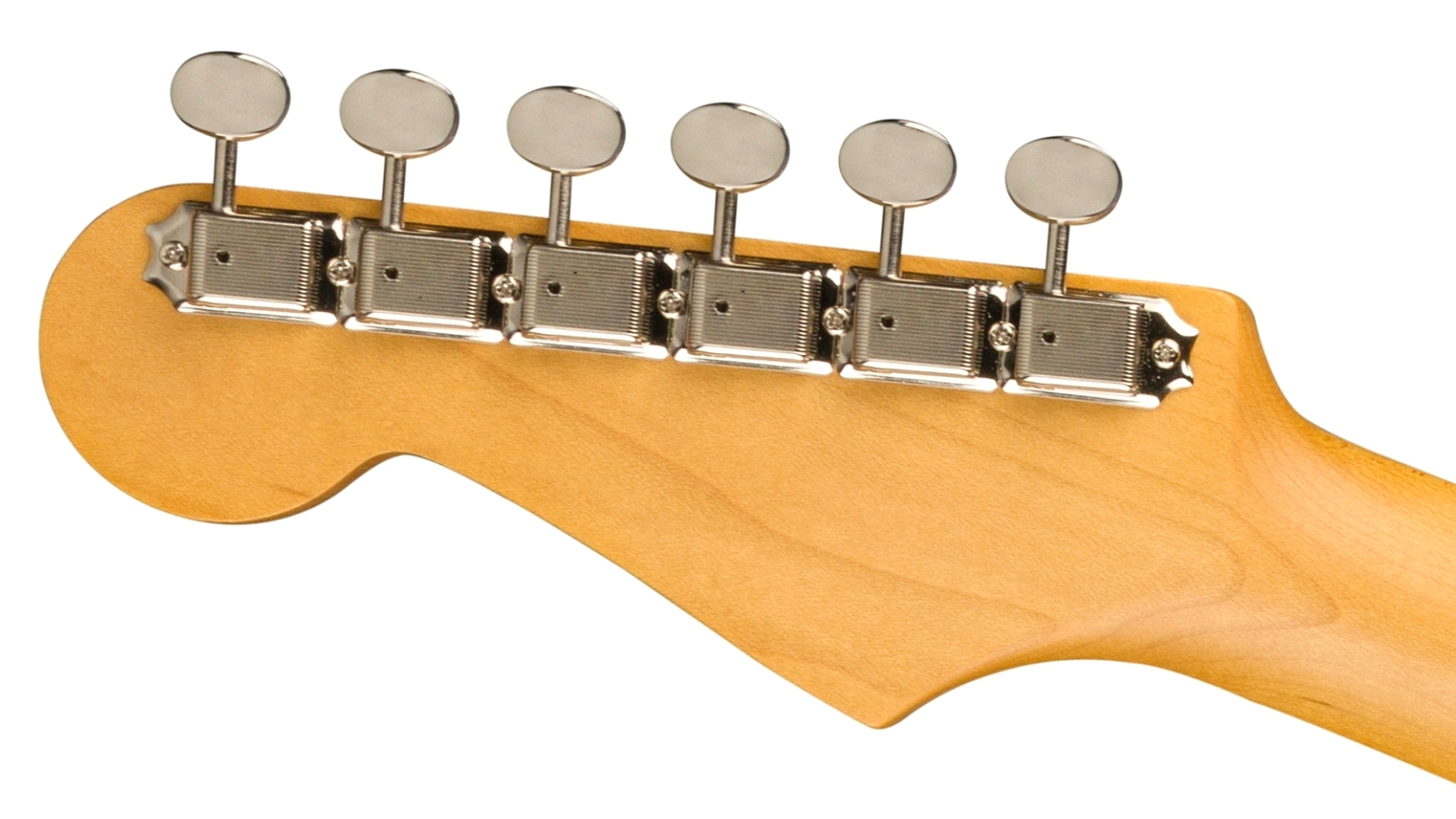
Players have understood the power of a humbucker in the bridge position ever since rockers starting chiseling hunks out of their Strats in the ’60s to install stray PAFs, and the HSS – humbucker, single, single – has been a standard alternative ever since.
Fender has used its Hot Vintage Alnico Humbucker in this instance, wound to exhibit a powerful 18.14k ohms DC resistance reading, which in turn enables a full single-coil sound with its tone control’s push-pull switch popped up for splitting.
Fender has used its Hot Vintage Alnico Humbucker in this instance, wound to exhibit a powerful 18.14k ohms
The middle and neck pickups are standard Vintage Single-Coil Strat units, and they’re wired through a five-way switch with master volume, a tone control for the neck and middle pickups, and a dedicated tone for the bridge pickup.
Many players have long considered a good Stratocaster modified with a full-size humbucker in the bridge position to be among the most versatile electric guitars available, and once plugged into a Friedman Mini Dirty Shirley head and 2x12 cab and a tweed Deluxe-style 1x12 combo, the JV Modified ’50s Stratocaster HSS takes that premise and runs with it.
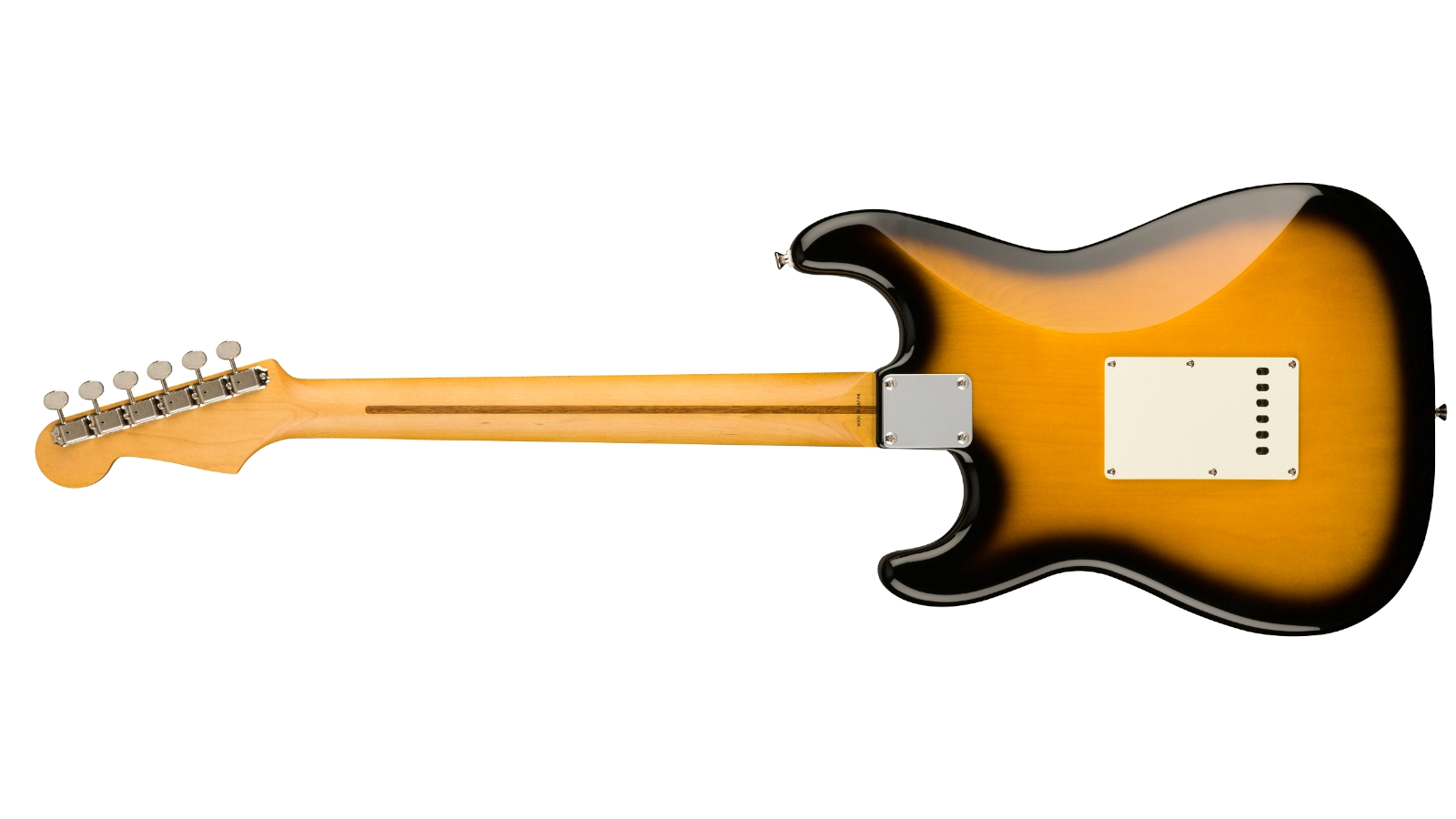
One aspect of the design that really impresses me in this guitar’s case is that its bridge position enables bountiful girth without really sacrificing its Fender quality.
The humbucker splits extremely well, yielding a bright traditional bridge-position tone that rivals that of most standard Strats, and the sounds from the bridge and middle together are extremely good both split and full-’bucker.
I found the latter particularly useful, providing a thicker, punchier version of the classically funky sound without sacrificing the honk and nasality of the trad single-single combination.
Unsurprisingly, given the pickup complement, the other positions dial in classic Stratiness with ease
The guitar’s full-humbucker clean tones might have benefited from the dual-gang 250k/500k volume pot used on Fender’s 2015 Shawbucker Stratocaster and some others, since the full humbucker is a little dark on its own, but that’s a tricky wiring task when a split-coil option is also employed, as in this case.
Otherwise, the humbucker sizzles and roars through a high-gain amp or distortion pedal, where more than enough treble bites through for cutting power.
Unsurprisingly, given the pickup complement, the other positions dial in classic Stratiness with ease, with enough low-end thump for piano-like single-note riffs on the wound strings.
Any excess of treble here – as can be found in almost any Strat – is easily dialed out with a twist of the tone controls.
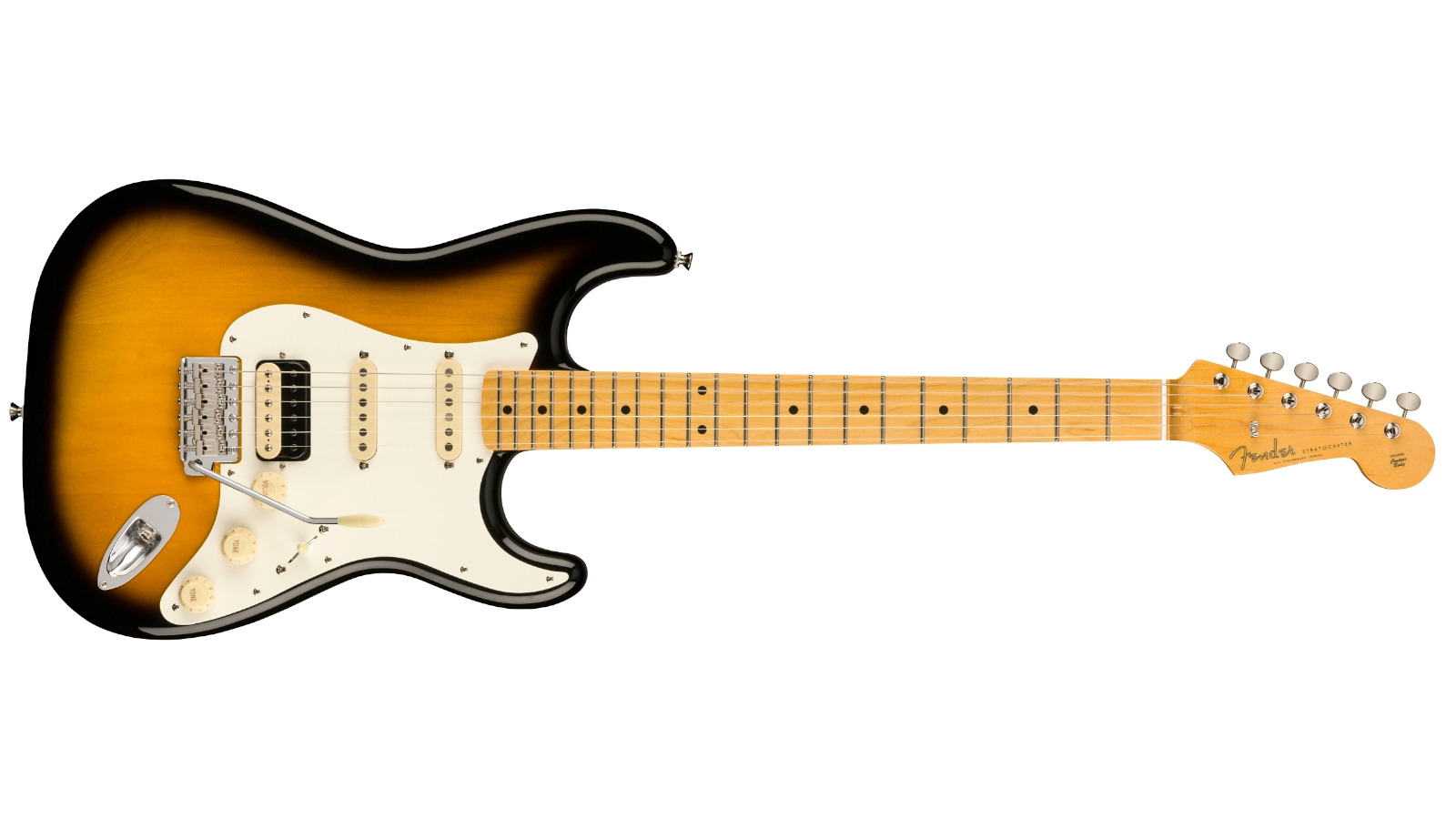
As for the tonewood foundation, it’s worth noting that although basswood might be frowned upon by some vintage purists (despite its use in plenty of high-quality modern guitars), it provides a relatively neutral palette, while enabling an appealingly light weight in this instance.
And honestly, I tried hard to “hear the wood” throughout the review process, and continually came away with the impression that this is simply a good maple-neck Strat making its mark on the frequency spectrum, with no surprises and nothing notably lacking from that more traditional template.
All in all, the guitar plays great, sounds great through a range of traditional and alternative Strat tones, and earns an Editors’ Pick Award for its achievements.
Specifications:
- NUT: Bone, 1.650” wide
- NECK: Maple, full soft “V” profile
- FRETBOARD: Maple, 25.5” scale, 9.5” radius
- FRETS: 21 medium-jumbo
- TUNERS: Fender vintage-style locking
- BODY: Solid basswood
- BRIDGE: Six-point vintage tremolo with bent-steel saddles
- PICKUPS: Hot Vintage Alnico Humbucking bridge, Vintage-Style Single-Coil Strat neck and middle
- CONTROLS: Master volume, tone shared by neck and middle, tone for bridge pickup with push/pull switch for coil splitting
- FACTORY STRINGS: Fender nickel-plated steel .009–.042
- WEIGHT: 7.1 lbs (tested)
- BUILT: Japan
Visit Fender for more information.
Dave Hunter is a writer and consulting editor for Guitar Player magazine. His prolific output as author includes Fender 75 Years, The Guitar Amp Handbook, The British Amp Invasion, Ultimate Star Guitars, Guitar Effects Pedals, The Guitar Pickup Handbook, The Fender Telecaster and several other titles. Hunter is a former editor of The Guitar Magazine (UK), and a contributor to Vintage Guitar, Premier Guitar, The Connoisseur and other publications. A contributing essayist to the United States Library of Congress National Recording Preservation Board’s Permanent Archive, he lives in Kittery, ME, with his wife and their two children and fronts the bands A Different Engine and The Stereo Field.
